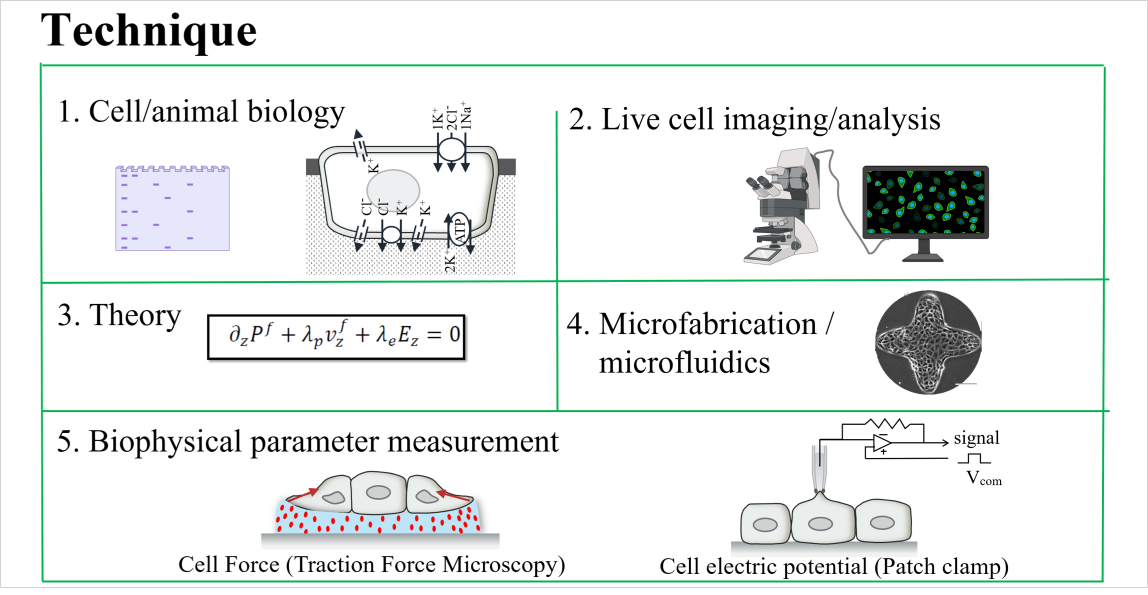Transitory/fast-changing bioelectric signals such as action potentials are well known to govern neuronal signal propagation and muscle contraction. Non-excitable tissues such as epithelia also possess ion channels and pumps which maintain steady bioelectric cues that can impact biological processes (e.g. regeneration, wound healing and growth). Yet, the establishment, working principles, and physiological relevance of bioelectricity in such contexts are still poorly understood. We and others recently showed that bioelectric potentials can couple with tissue mechanics to influence cell proliferation, death, and architecture of simple tissues in vitro. This provides new ideas and insights for us to uncover novel biophysical principles of tissue homeostasis. We are also applying this knowledge to control collective cell behaviour toward tissue engineering and regenerative medicine applications. To study the electromechanobiology of tissues, interdisciplinary methods such as molecular/cell/animal biology techniques, advanced optical microscopy/image analysis, microfluidic/microfabricated systems, new biomechanics/bioelectric measurement tools, and physical theories will be developed and used to dissect the problems in a holistic manner.


